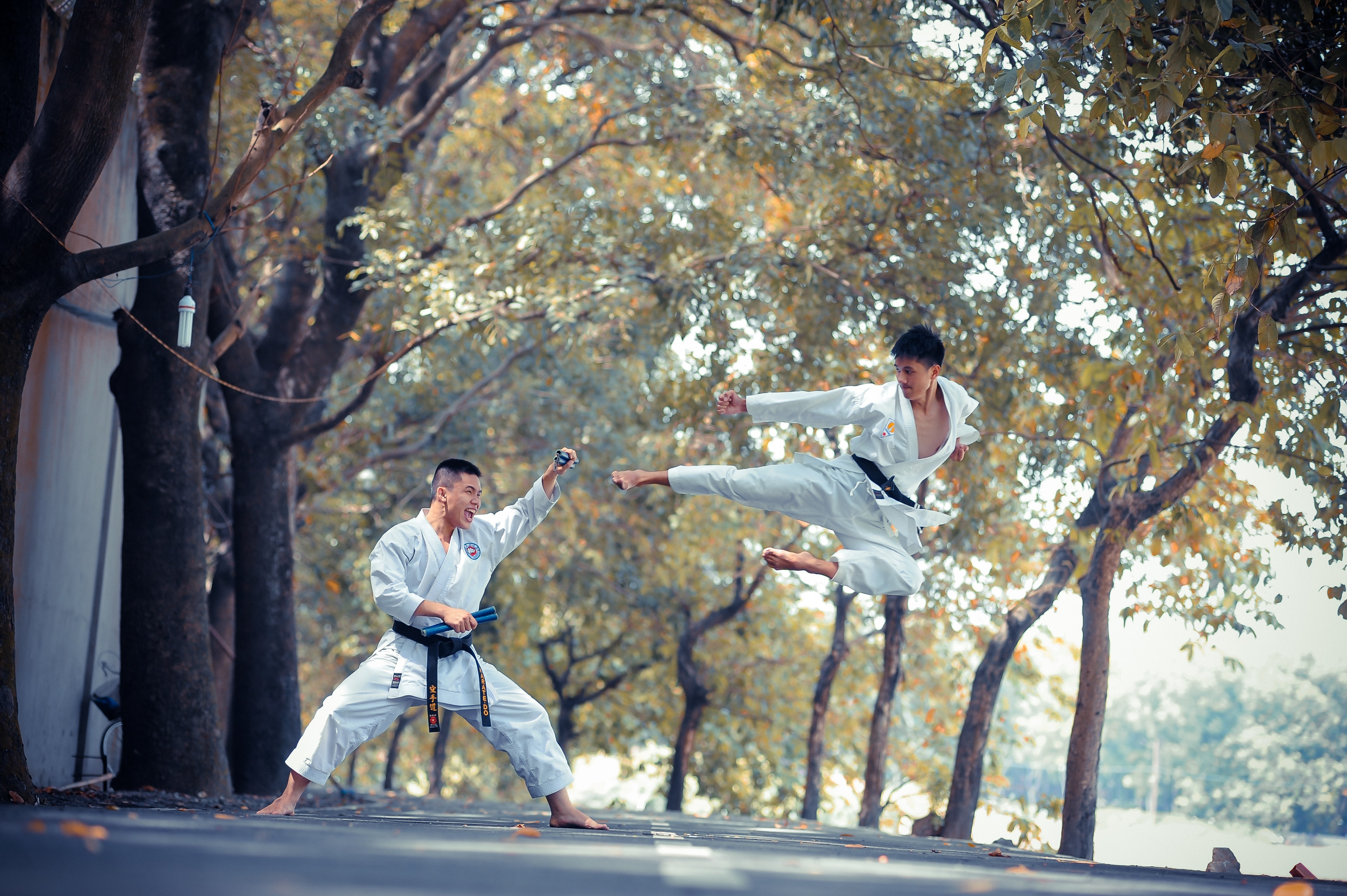About...
Karate, (Japanese: “empty hand”) unarmed martial-arts discipline employing kicking, striking, and defensive blocking with arms and legs. Emphasis is on concentrating as much of the body’s power as possible at the point and instant of impact. Striking surfaces include the hands (particularly the knuckles and the outer edge), ball of the foot, heel, forearm, knee, and elbow. All are toughened by practice blows against padded surfaces or wood. Pine boards up to several inches in thickness can be broken by the bare hand or foot of an expert. Timing, tactics, and spirit, however, are each considered at least as important as physical toughening.
In sporting karate and sparring (kumite) in training, blows and kicks are stopped short, preferably within an inch of contact. Sporting matches commonly last about three minutes, to a decision, if neither contestant has scored a clean “killing” point in the estimation of the judges. Contests of form (kata) are also held, in which single competitors perform predetermined series of movements simulating defense and counterattack against several opponents. Performances are scored by a panel of judges, as in gymnastics.
Karate evolved in East Asia over a period of centuries, becoming systematized in Okinawa in the 17th century, probably by people forbidden to carry weapons. It was imported into Japan in the 1920s. Several schools and systems developed, each favouring somewhat different techniques and training methods. Karate, like other Asian martial-arts disciplines, stresses mental attitude, rituals of courtesy, costumes, and a complex ranking system (by colour of belt). There is some overlapping of technique with other fighting styles.
Karate practise is generally divided up into three components: Kihon (basics), Kata (forms) and Kumite (sparring).Kihon (basics) covers various strikes, blocks, kicks, stances and movements one might need to use in self-defence. Students practise these in lines each class so that the techniques are refined and become instinctive. Kihon, or basic practise, allows students to develop an understanding of their body and how it can be used as most effectively as a weapon, for example, how to generate maximum power with minimum effort. Kata (forms) is often referred to as the ‘art form’ of karate. Each kata (form) is a traditional predetermined pattern of movements that promotes a number of self-defence principles. Kata practise also develops coordination, balance, agility, strength and speed. Kumite (sparring) is where techniques and principles learnt in Kihon (basics) and Kata (forms) are applied against an opponent. Kumite can vary greatly, depending on the student’s level of experience. For example, beginners only practise pre-arranged kumite. This is where both the attacker and defender know exactly which techniques will be used and when. They do this in a slow and controlled environment. As students develop in ability and confidence, they may choose to move onto free kumite. This is where students wear protective equipment and spar in an environment where techniques are exchanged freely. Karate has a coloured belt (or ranking) system allowing students to set goals and measure their progress. As they progress and develop in both physical and technical ability, each component becomes more advanced, giving them a new challenge and skill to develop take on. As the student approaches their black belt, their technique, speed, coordination and stamina all become natural as a result of strong practice. It is at this stage that the serious student discovers that his or her study of karate has only just begun. The object of true karate practice is the perfection of oneself through the perfection of the art.
- Sub-Styles
- Budokan
- Goju-Ryu
- Kenpo
- Kyokushin
- Shito-Ryu
- Shorin-Ryu
- Shotokan
- Uechi-Ryu
- Wado-Ryu



